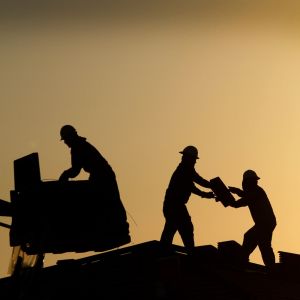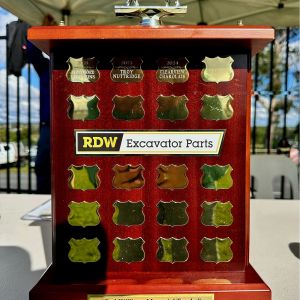Only four years ago, the global mining sector (defined as all Mining and Exploration stocks in the world measured by SNL Metals and Mining) was worth nearly $USD2.5 trillion. Now, the 2,684 listed companies have dropped below $USD1 trillion. This is both distressing and interesting at the same time. As exploration has continued, more resources have been added than has been depleted in that time, yet the markets now value these companies Assets and income prospects to be merely 40% of what they were.
By comparison, Apple is valued at $650 billion and Google at $440 billion. So combined, these two companies alone are now seen as worth more than the entire global mining industry! Call me old fashioned, but I can see a value in things I can touch, like machinery or earth. Apple produces products that lead its segment, but do you remember a couple of industry leaders called Nokia and Kodak? They were gazumped by other technology and have disappeared. Hero to zero, in Nokia’s case it only took about 2 years.
Google is a dominant player on the Internet. But what if one day, the world decided that they would use another platform? It’s not so far fetched when you consider that China for instance has banned Google, and operates its own search engines. Should this happen in other countries or Google encountered problems, the company “value” would largely evaporate. Google is already in court in the European Union over anticompetitive behaviour, and social pressures (like not clamping down on certain types of internet traffic) could put it out of favour. Back to my old fashioned view, what value would such a business then represent? Having said that, Google is probably one of the most entrepreneurial companies in the world, despite its size, and shows continued pro-activeness to remain market leader.
Granted, the prices paid for resources has dropped significantly in recent years. This has been caused by increased supply (new mines all around the world together with increased output from existing sources) and falling demand. For instance, Chinese metal imports as a percentage of Chinese GDP has fallen from just under 2.5% to 1.5%. We know of several Chinese manufacturers that a couple of years ago couldn’t keep up with supply and were held back by electricity being rationed (experiencing brown outs) and have now cut working hours to 2 days a week.
So the old boom mantra of “stronger for longer” has been replaced by what the IMF call “low for long price scenario”. I prefer to call it the new normal. This is probably as good as it gets for the next 3 to 5 years.
Valuing our Industry
In such an environment, it is no wonder that market dominant players like Caterpillar have had to announce massive cuts to production capacity and staff. Caterpillar is rightly referred to as a reliable bellwether for the global construction and mining industry, so cutting more than 31,000 employees (currently employing around 130,000 people) and closing 20 facilities since 2012 gives you an idea of the scale of the slowdown.
In Australia, nearly all the companies in our Industry are foreign owned, so it is difficult to publically obtain details of how the Australian subsidiaries are performing. Further, there are hardly any products for Earth moving equipment manufactured in Australia. RD Williams is one of very few companies operating in our country that is 100% Australian owned, paying all taxes in Australia and re-investing into our business locally to ensure a strong future. We try to source as many products as we can locally. Through networking with other companies, it is clear that the Australian supply network has probably mirrored the changing nature of the user market. Current demand is for smaller machines as used in the general construction market, whilst the Mining and major projects segment that uses large machines is still in decline.
Looking at how to value the Construction sector in Australia, the value of private and public construction work fell 7.3% to $166.5 billion. Interestingly, the largest 100 contractors increased their contract value by 31.3% to just over $50 billion. Construction of flats and units has doubled in the past year to $15 billion, whilst Mining has decreased 75% to a paltry $1.17 billion. There has been serious consolidation in the sector over recent years, partly by acquisition, but mainly by the larger companies growing organically. Some of this has been driven by Government (and major industry players) purchasing processes that largely rules out smaller contractors from the process. There has also been a changing of the guard, with many of the successful stalwarts of the industry deciding that now is a good time to retire. Succession planning has been unsuccessful in many cases, with owners deciding to simply sell off the Assets and close down the business.
Valuing Machinery
The changes in the make up of the industry has made for some interesting scenarios when trying to put a valuation on a machine. There have been several recent instances where 4-5 year old skidsteers have sold for more money than operational D11 dozers and 992 loaders. Whilst not an apples for apples comparison (the dozer and loader are 30 years old, but still have a longer workable life and massively greater production and earnings capacity), the fact is that a new skidsteer wouldn’t cost much more than they paid for the used one, whilst the dozer is a million dollar investment. And whilst the skidsteer can be moved on a basic plant trailer, moving the dozer to your worksite consist of dismantling/re-assembling and all kinds of transport related head aches meaning that it will cost more to move it than what you paid for it…
Looking at the purchase prices of some of these machines, I’m still surprised not more owners have opened their eyes to the opportunities that are there. Transport costs aside, at what other point in history could you have purchased 10-20 used running machines for the equivalent price of one new one? Even if you used one and had the others as standby units and ran the machines until they broke down then simply scrapped them, you’ve substantially reduced two of the main costs of operation (cost of capital and depreciation). A safer option of course is to talk to a reputable dealer (such as RD Williams) so that you can be assured that the machine you are buying is of a high standard and ready to work reliably for you when it hits your job site. You’d still have one or more machines for the same price as the new one, plus change left in your bank account.
With factors such as operator productivity, it’s debatable how much more efficient a new machine is. Yes, you will require a higher maintenance budget, but companies like RD Williams have a wide range of competitively priced components on the shelf ready to get you back to work quickly. We provide quality new parts and rebuilt components that give you a competitive edge compared to buy genuine new. Wear parts (like edges and teeth and other Ground Engaging tools) will wear out the same on a new or old machine, and again RD Williams has a broad range of top quality GET in stock. It’s of course the total cost of ownership that matters. Keep an open mind, and you may be amazed at the savings you can achieve. That’s more money in your back pocket.
As always, onwards and upwards!
Fred Carlsson
General Manager



